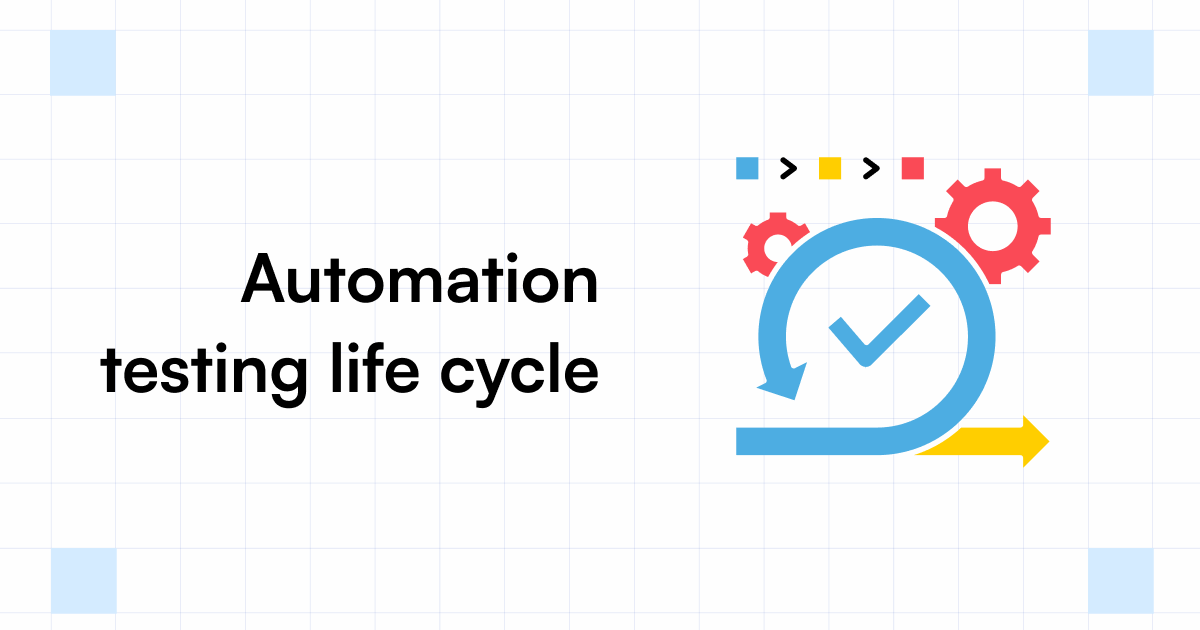Exactly How Automation Testing Reinvents Quality Control Processes
Exactly How Automation Testing Reinvents Quality Control Processes
Blog Article
Guaranteeing Success in Automation Checking: Key Metrics, Obstacles, and Solutions Every QA Team Must Know
In the world of software application quality guarantee, the landscape of automation testing is ever-evolving, requiring a meticulous approach to guarantee smooth procedures. The journey to mastering automation screening is led with nuances that call for an eager eye for surveillance, evaluation, and constant enhancement. As the market pushes forward, the quest for optimal performance in automation testing remains a consistent search, prompting QA teams to furnish themselves with the expertise and strategies vital for accomplishment.
Importance of Key Metrics
Recognizing the relevance of vital metrics is essential for evaluating the efficiency and effectiveness of automation screening procedures. Trick metrics serve as measurable procedures that supply beneficial insights into different elements of the screening procedure, such as examination protection, examination execution time, problem thickness, and examination situation performance. By assessing these metrics, QA groups can determine traffic jams, ineffectiveness, and areas for renovation within their automation screening structure.
One important facet of vital metrics is their capability to track progression and keep track of the general wellness of the testing procedure (automation testing). They allow stakeholders to make educated decisions based upon data-driven insights, which can cause more effective screening methods and better resource appropriation. Furthermore, key metrics can assist teams established practical goals, determine the success of automation efforts, and demonstrate the ROI of automation screening efforts

Usual Challenges Encountered
Difficulties frequently encountered in automation testing processes can significantly impact the general effectiveness and performance of QA groups. Automation testing may not cover all elements of screening, such as functionality and user experience testing, which still call for hand-operated intervention. Getting over these difficulties calls for proper preparation, strategic test instance selection, durable maintenance procedures, sufficient sources, and a clear understanding of the limitations of automation testing.
Reliable Solutions for Challenges
To address the challenges run into in automation testing, carrying out efficient options is crucial for enhancing the effectiveness and efficiency of QA groups. One key remedy is to purchase durable training programs for QA groups to ensure they have the needed abilities to properly utilize automation devices. Training can connect knowledge spaces, improve understanding of automation structures, and improve scripting capabilities, inevitably resulting in much more reliable examination development and execution.
Another crucial service is to establish clear interaction networks within the QA group and with various other stakeholders, such as programmers and task supervisors. Efficient interaction aids in aligning expectations, sharing progress updates, and quickly resolving concerns or obstacles that may develop throughout the automation screening image source procedure.

Tracking and Analysis Techniques
Implementing effective surveillance and evaluation methods is critical for making sure the success and performance of automation screening processes. By utilizing surveillance tools, QA teams can track the efficiency of test manuscripts, determine bottlenecks, and identify areas for renovation. Real-time tracking enables quick detection of concerns, making it possible for rapid response and resolution. In addition, evaluating test results and metrics supplies important understandings into the top quality of the software program being checked and the effectiveness of the testing technique.
One key method in surveillance and evaluation is using control panels that consolidate appropriate metrics and KPIs in an aesthetically available layout. These dashboards supply a detailed overview of test execution condition, examination protection, defect patterns, and various other critical information. On a regular basis reviewing and evaluating these dashboards can assist QA groups make educated choices, focus on jobs, and maximize screening efforts.
In addition, implementing automated alerts and notifications based on predefined limits can boost proactive monitoring and prompt treatment. By establishing alerts for performance variances or examination failings, groups can address problems promptly and prevent them from rising. Overall, tracking and evaluation strategies play an important function in guaranteeing the performance and success of automation testing campaigns.
Continuous Improvement Methods
Enhancing the efficiency of automation testing processes demands the consistent improvement of approaches Resources and methods. Continual renovation techniques are pivotal for QA groups to adapt to developing technologies and provide top notch software. One crucial method to enhancing automation screening processes is to perform normal evaluations and retrospectives. By analyzing previous testing cycles, groups can determine bottlenecks, ineffectiveness, and locations for enhancement. Executing responses loops and incorporating lessons discovered into future testing structures can yield considerable improvements gradually.

Verdict
To conclude, it is crucial for QA teams to recognize the essential metrics, challenges, and options in automation testing to make sure success. By thoroughly monitoring and examining data, carrying out effective remedies to typical obstacles, and continually improving strategies, QA groups can enhance their testing processes Go Here and deliver premium software program items. Complying with these techniques will ultimately result in extra efficient and reliable automation testing methods.
By analyzing these metrics, QA groups can recognize bottlenecks, inadequacies, and areas for enhancement within their automation screening structure.
In addition, vital metrics can aid groups set realistic goals, gauge the success of automation initiatives, and show the ROI of automation screening initiatives.
Obstacles commonly experienced in automation screening procedures can significantly impact the overall effectiveness and efficiency of QA groups. Automation screening might not cover all facets of testing, such as functionality and individual experience screening, which still call for hand-operated treatment.In conclusion, it is important for QA teams to comprehend the crucial metrics, obstacles, and services in automation screening to make certain success.
Report this page